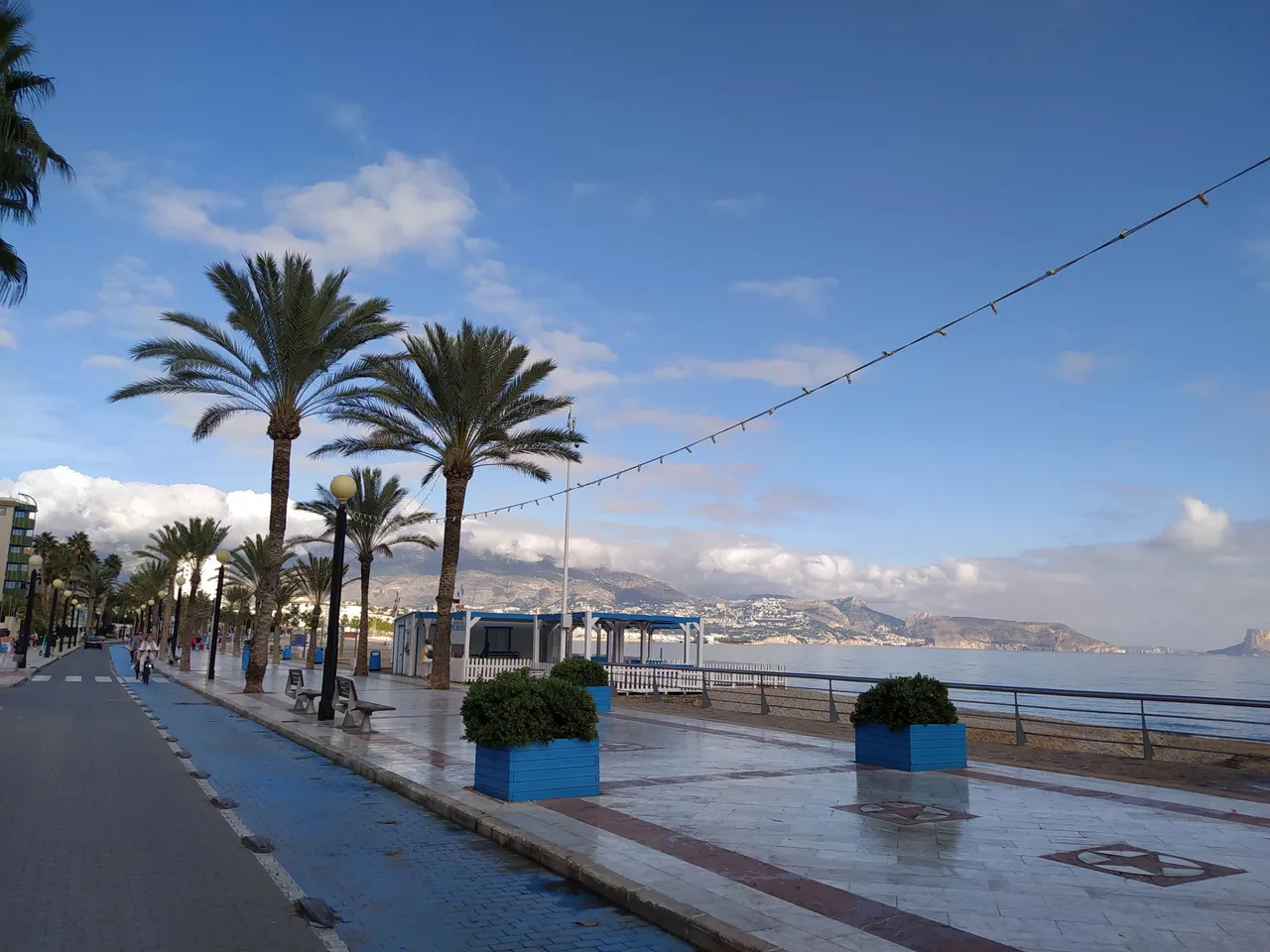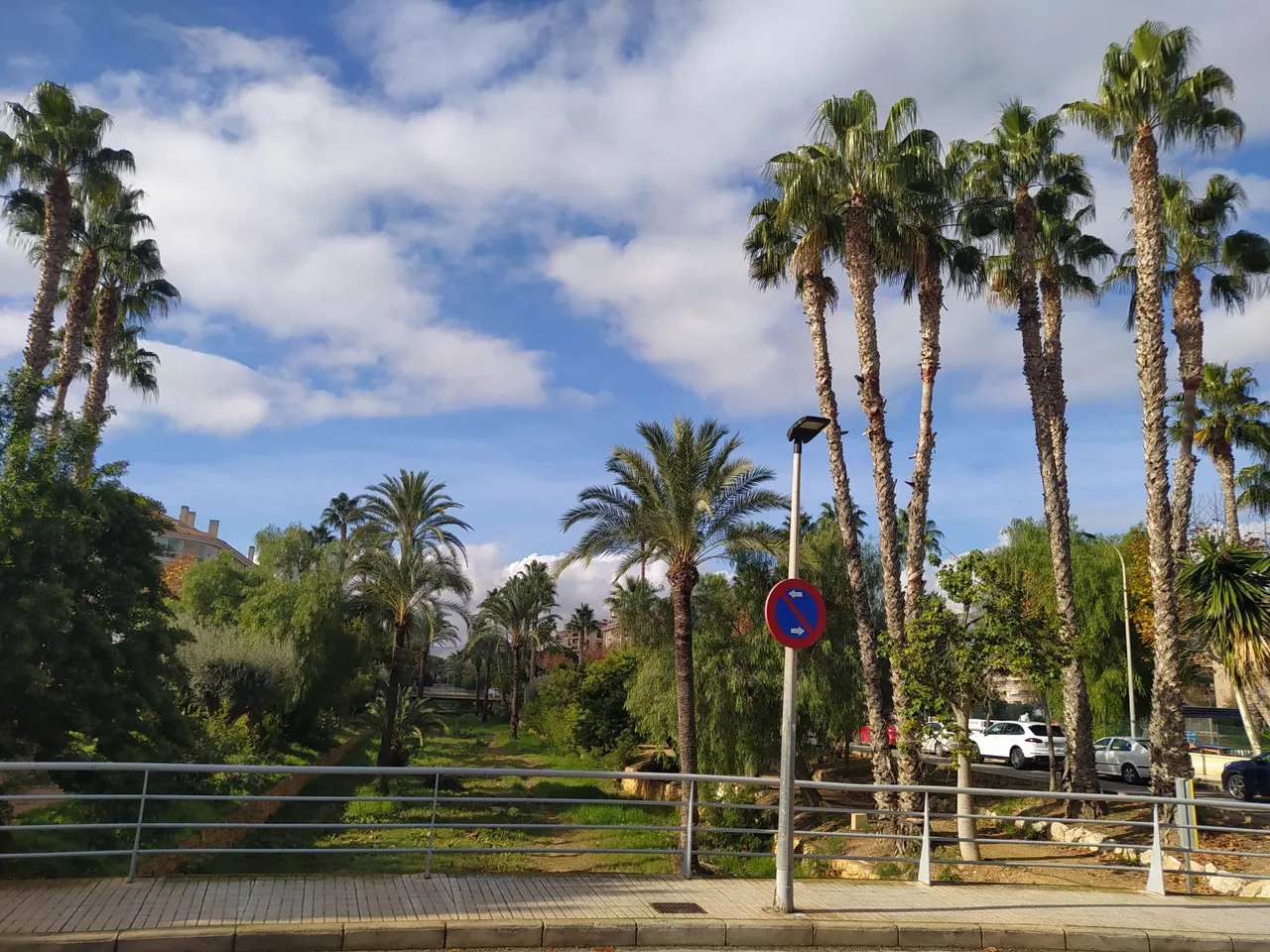
Did you know that Hamburg, Vienna and Amsterdam are the three cities with the highest number of bridges in Europe? Venice is just in fifth place, although we all could think about it as the "capital of bridges". If you don't believe me click this link. It is charming and a bit like a fairy tale to cross so many small brides every day. But you don't have to live in one of those cities to enjoy this bridge-crossing activity. It is enough that you come to my little town and take a walk in my neighbourhood. The little bridges are here, but the tiny detail of why this place differs from those big cities is that there is no real river to flow under them. And that the aforementioned cities are big cosmopolitan centres with so many cultural activities around.
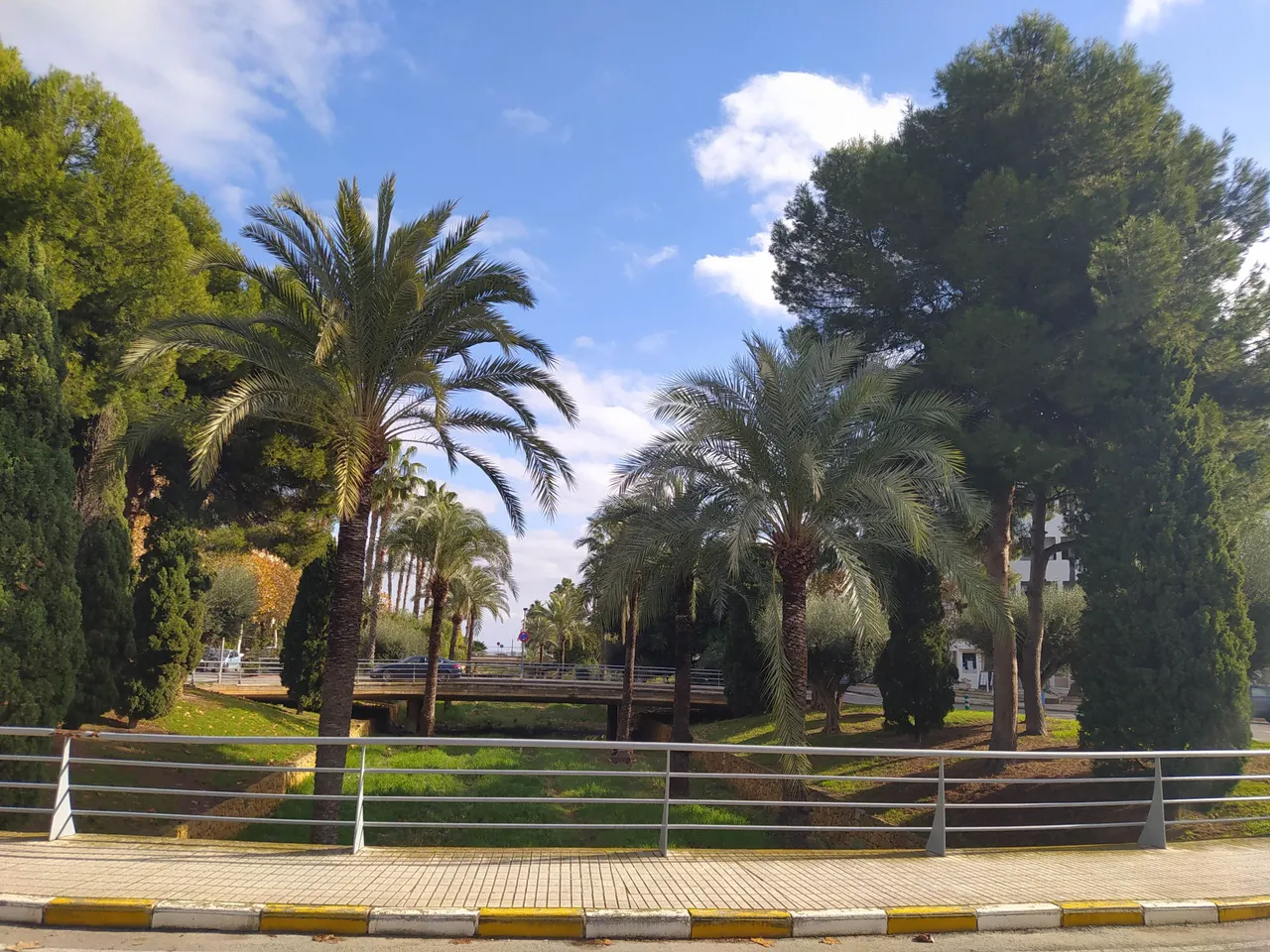
Almost nothing happens here. We just have blue skies, a bunch of palm trees and green grass instead of the river. But bridges - those we do have!!
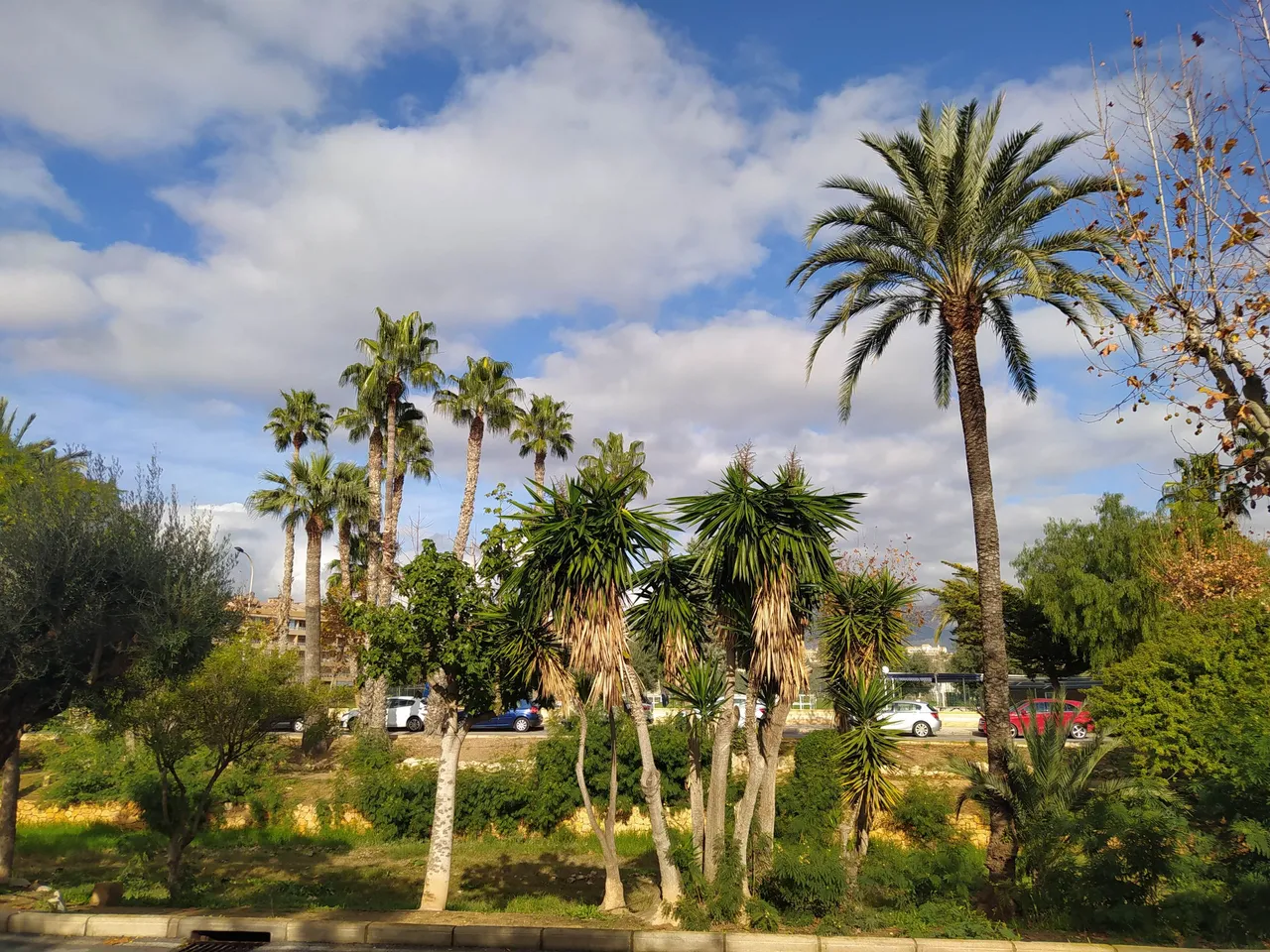
And paths under the bridges.
If you are already bored walking on the pavement, there is a possibility to walk on the improvised little path among the vegetation that grows in the riverbed. Pet owners also like this route, as the dogs can be released from the leash so they run freely around. Sometimes I see cats, but they are stray cats, living here around, on freedom.
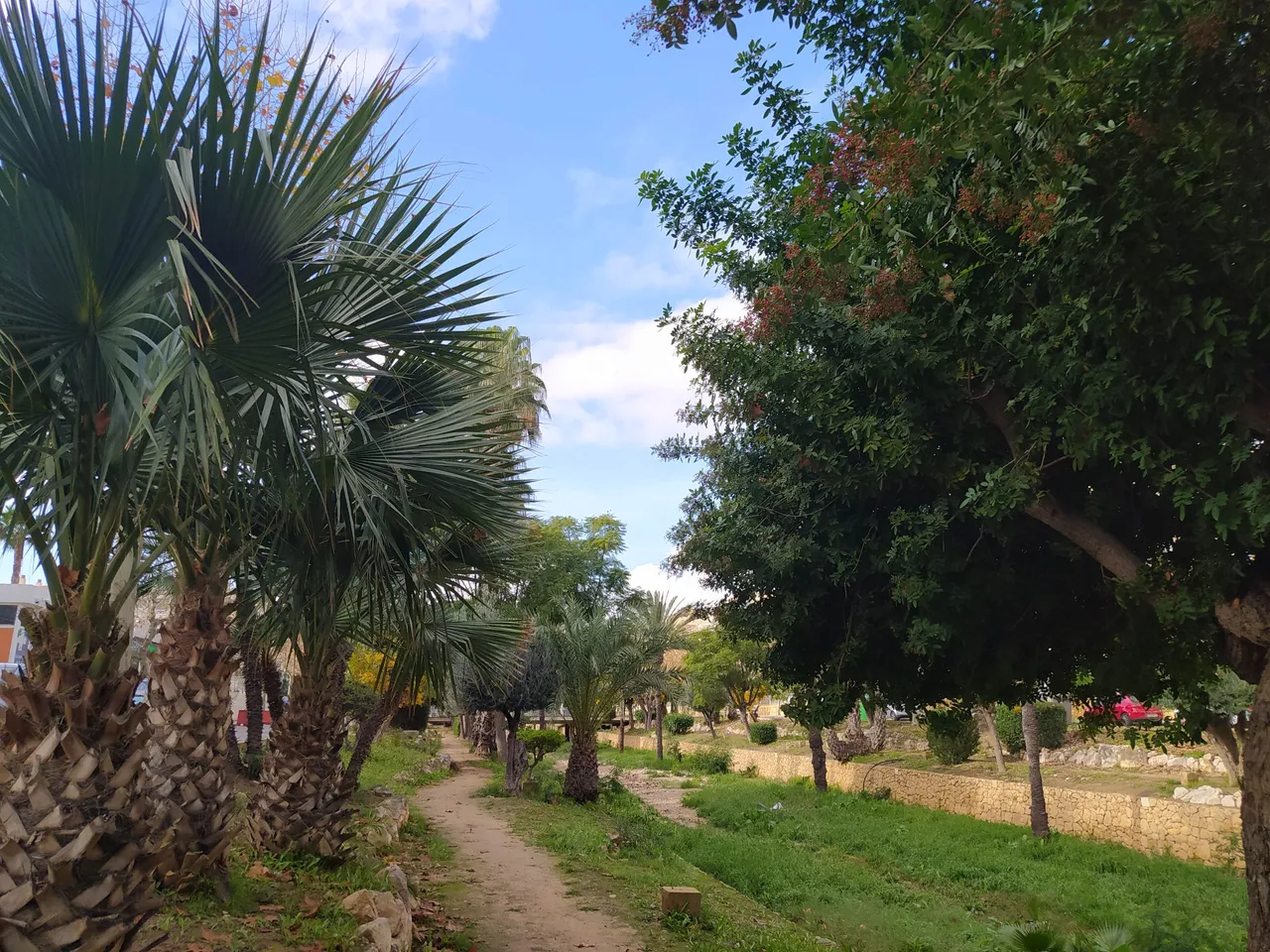
We also have a great number of roundabouts during this whole street that goes in parallel with the "dry river". This Beetle just passed at the moment I took the photo, it came to Hive by accident. Still, it is a cool antique car, so why not post it actually? Maybe things happen for some reason.
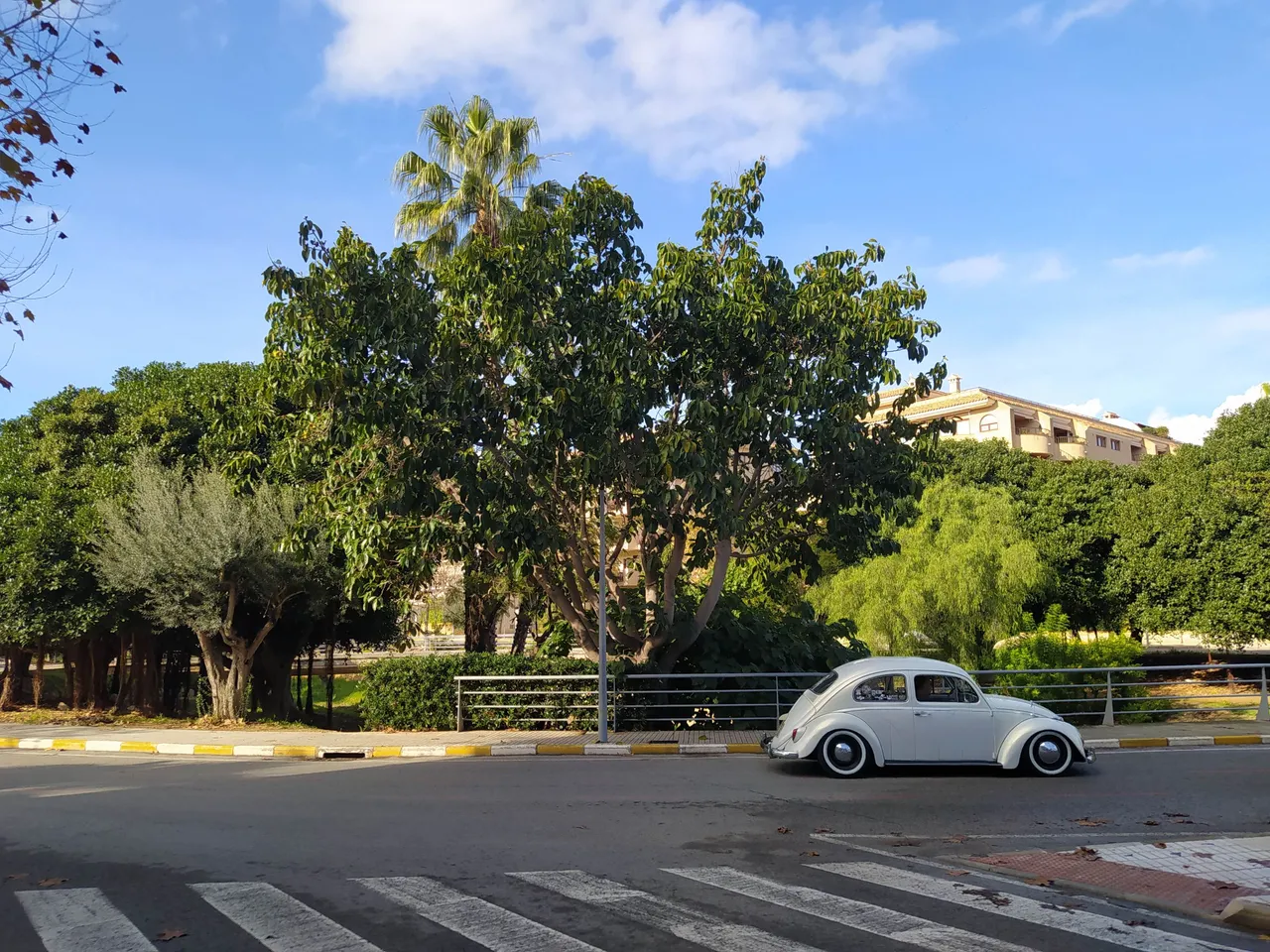
About being a cosmopolitan place and the aforementioned bigger centres... Well, the little village with these bridges and no river can be also called a cosmopolitan tiny place, as Spanish is not the only language you will hear on the streets. You can listen to a lot of Dutch, Norwegian, German, English and Russian from the passersby, but not just those. I was surprised when a few years ago I learned that there were 91 nationalities living in this municipality. But still, this is a calm environment, with no daily concerts or theatre performances that we could visit. We just have composers to walk with them and imagine the music they wrote back in time.
No, it's not a joke or another invention of mine. We can indeed walk with many classical composers, and here is the proof. This boulevard would be in English: Musicians Boulevard. This is the long street that goes along the riverbed, with the roundabouts. It leads to the promenade, but before we reach it, I would like to show you the streets connected to the Musicians' Boulevard.
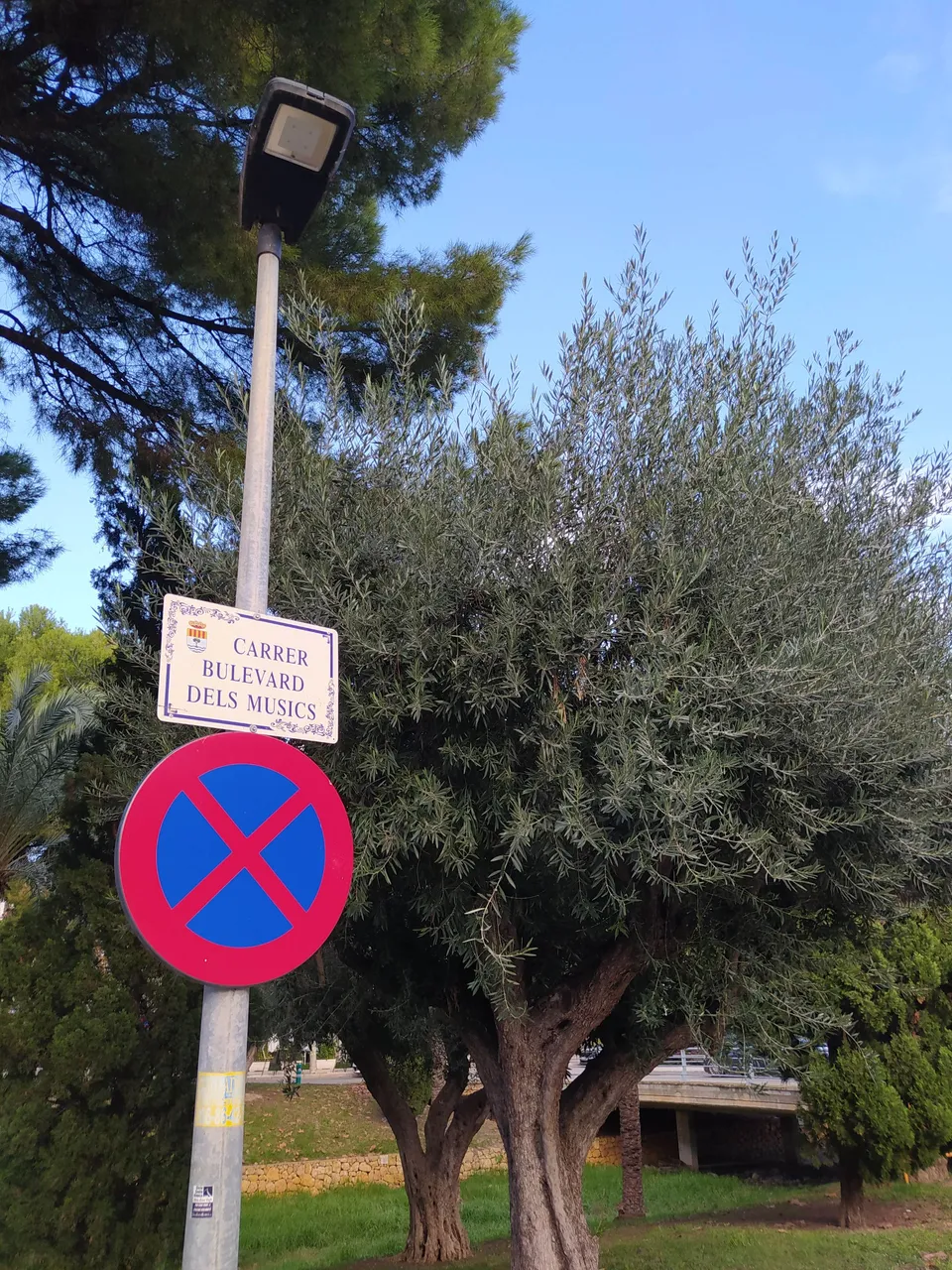
Street of Wolfgang Amadeus Mozart. He was an Austrian composer, a genius that started at a very early age. Mind this, he was around 3 years old when already composed and continued to do it until his death (which unfortunately happened when he was 35). I am sure everyone heard his Requiem, some of his symphonies, piano sonatas and many other compositions.
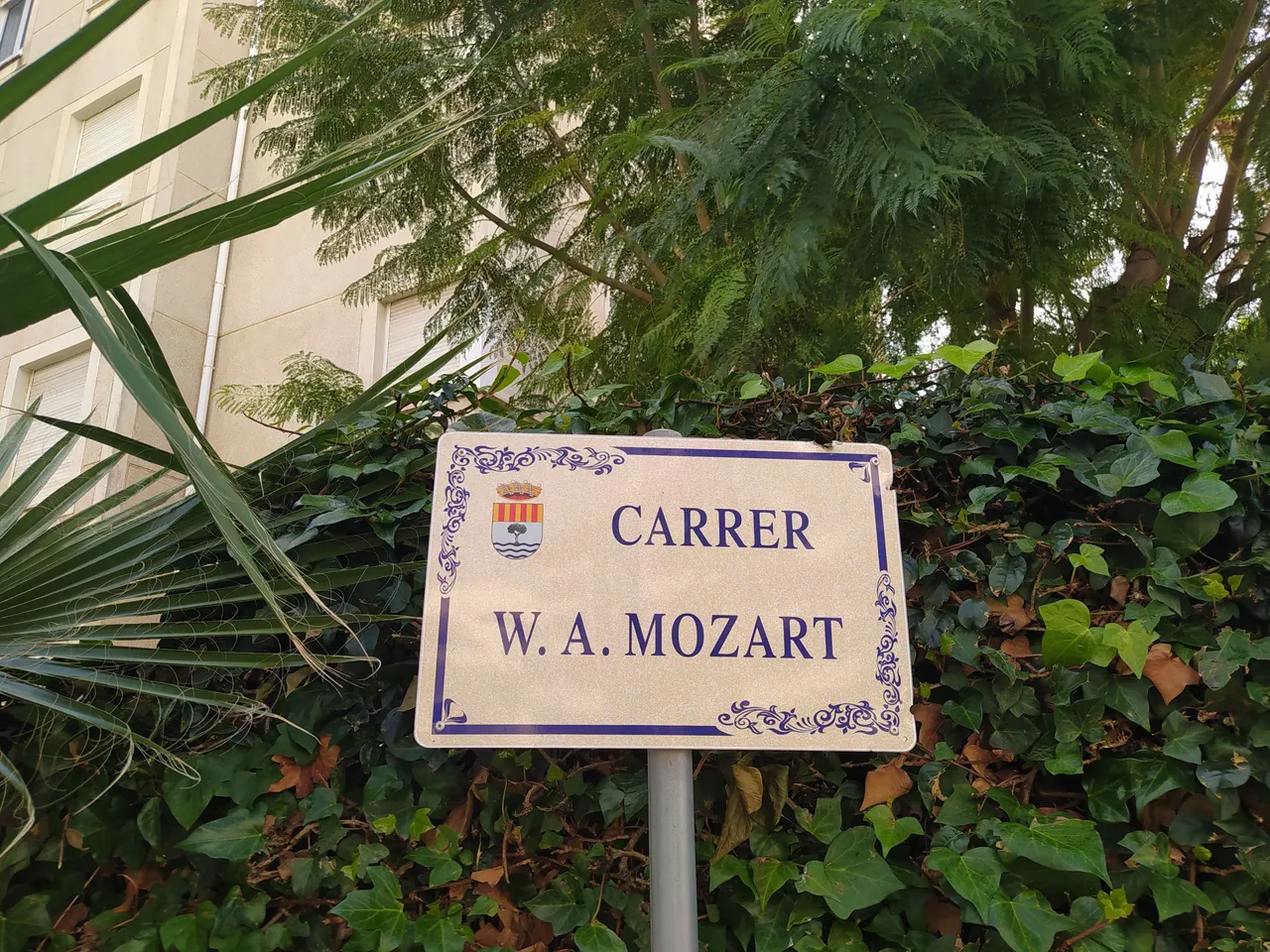
Manuel de Falla. He was a Spanish composer from the first half of the XX century, as well as it was Isaac Albeniz.
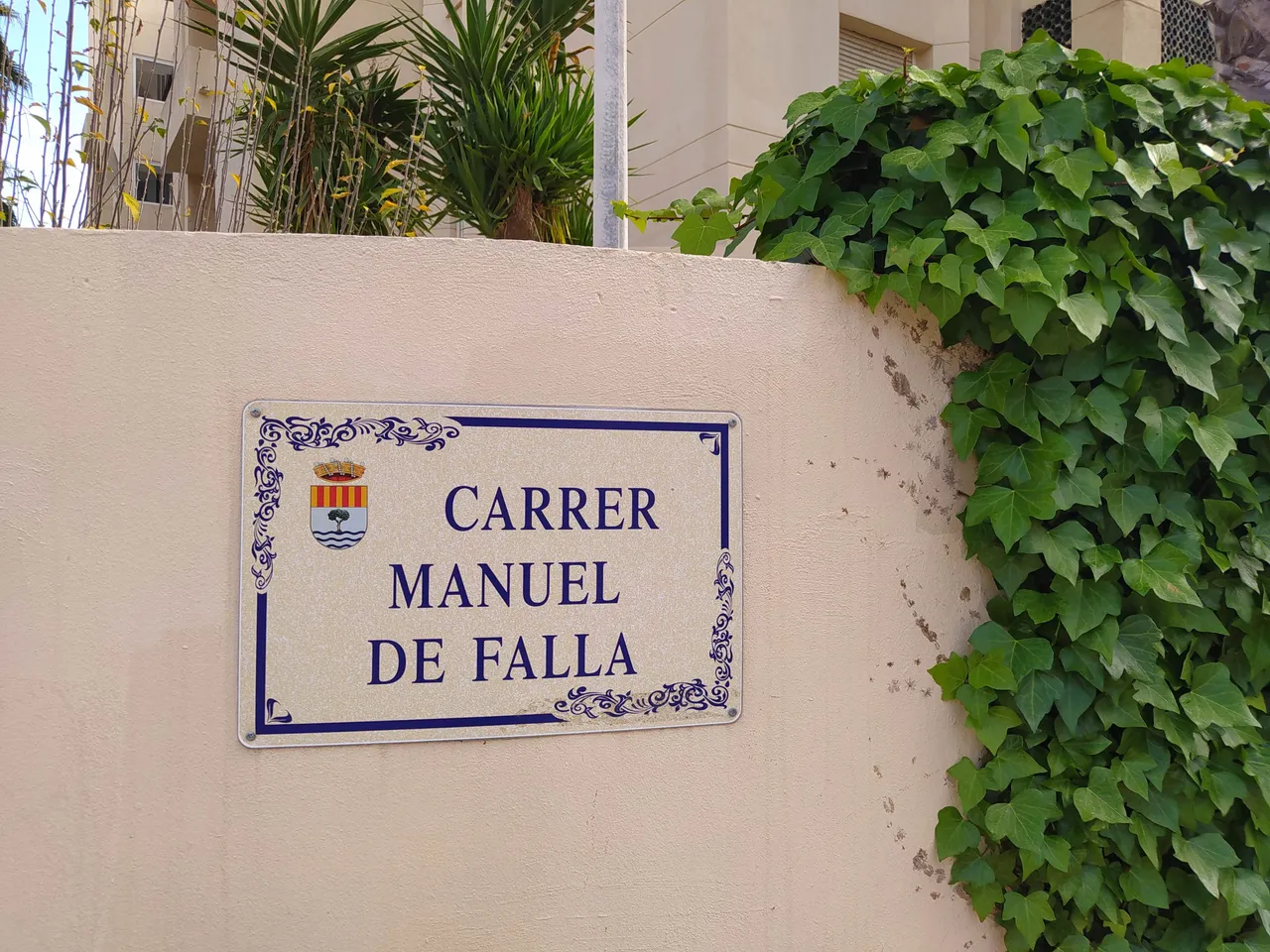
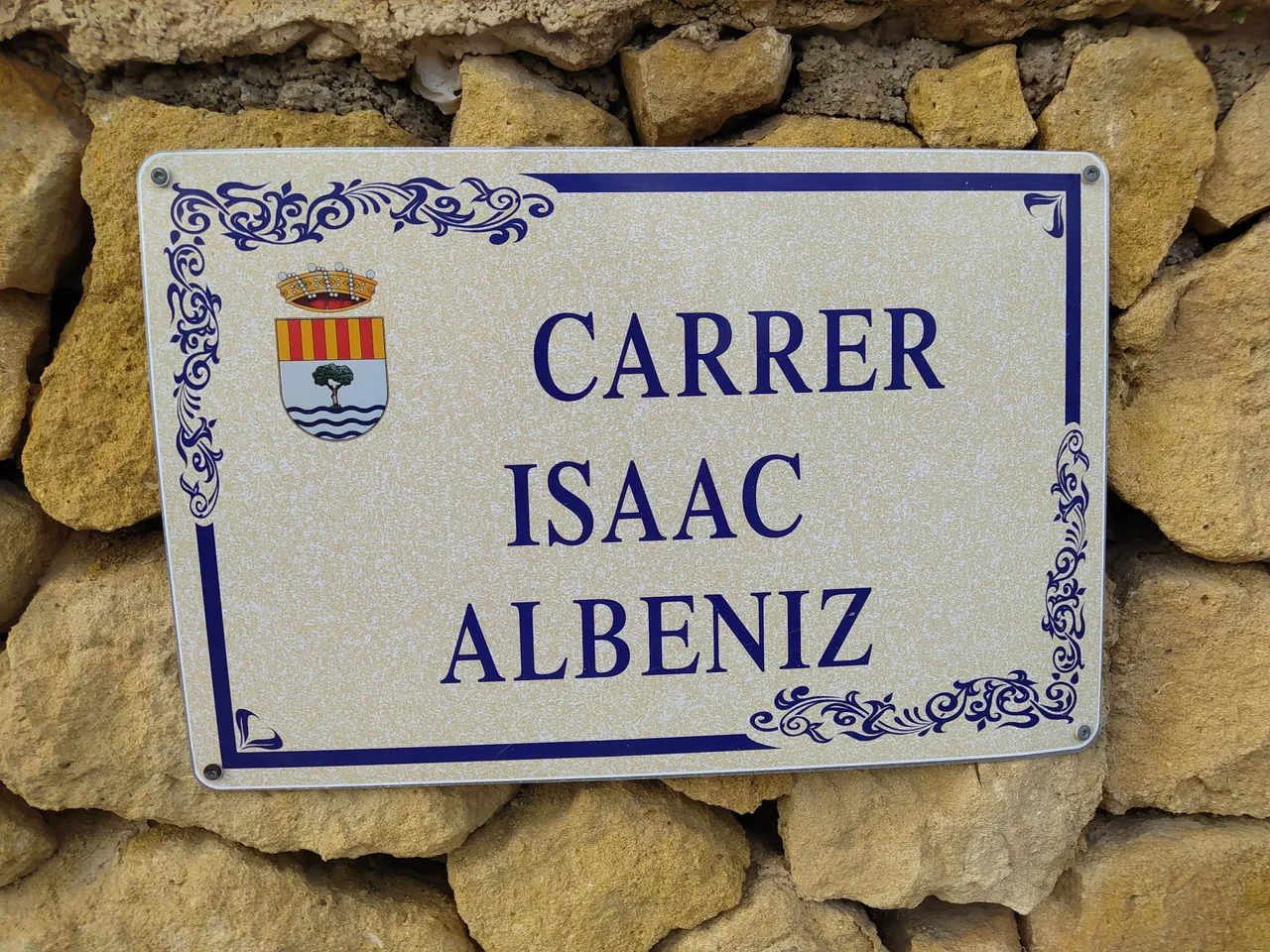
More of the Spanish names from the field of classical music can be seen here. Joaquin Rodrigo, with one of the most important works he left for the guitar, Concierto de Aranjuez surely made his path into history. A curious fact, he was blind from his early childhood, due to an illness he contracted.

Not blind but deaf, it was Ludwig van Beethoven. His symphonies, piano and violin concertos and sonatas are those that are written into history with capital letters. Maybe a bigger street is what he deserved, but as the whole place is small, the streets are small too. :D
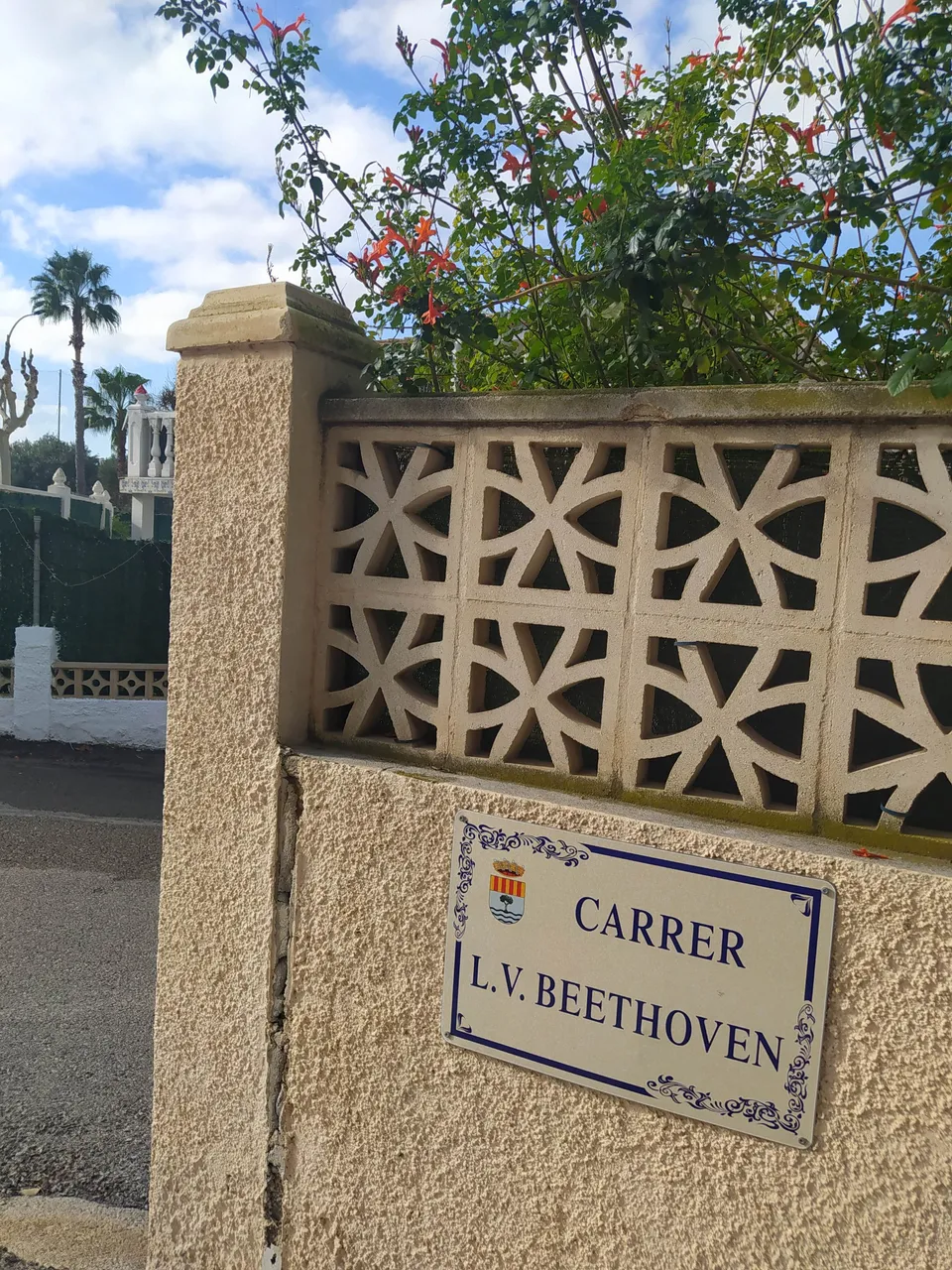
Though, there are also passages with composers, not just streets and boulevards. Handel, Strauss and Liszt got just passages, pffff... I would give them avenues, but it was not me who decided about the names of the streets. After all, I can be happy to be able to take this walk with the composers, so I should not complain :))



Pau Casals is also here around. I will never forget one of the quotes associated with him... When he was asked why he is still practising the cello at a very advanced age (around 90) he responded that it is because he feels that is making daily progress. Very true statement, as it indeed doesn't matter how old are you, you can still improve and make things better if you don't give up on studying.
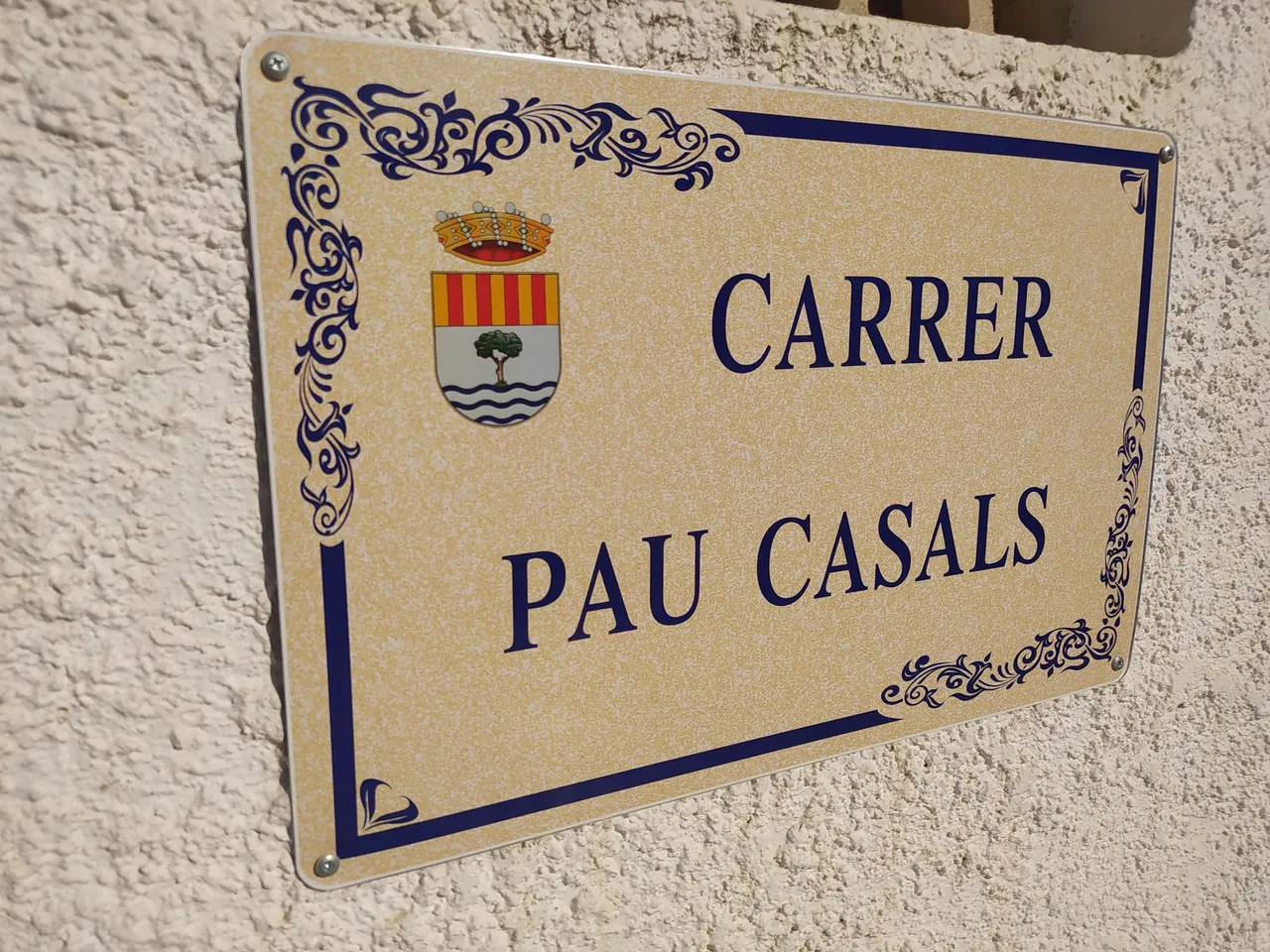
Richard Wagner got a display on a corner that connects two streets, more visibility that's true, but eye contact can be achieved only with not-so-tall people. Why this low fence has to exist?
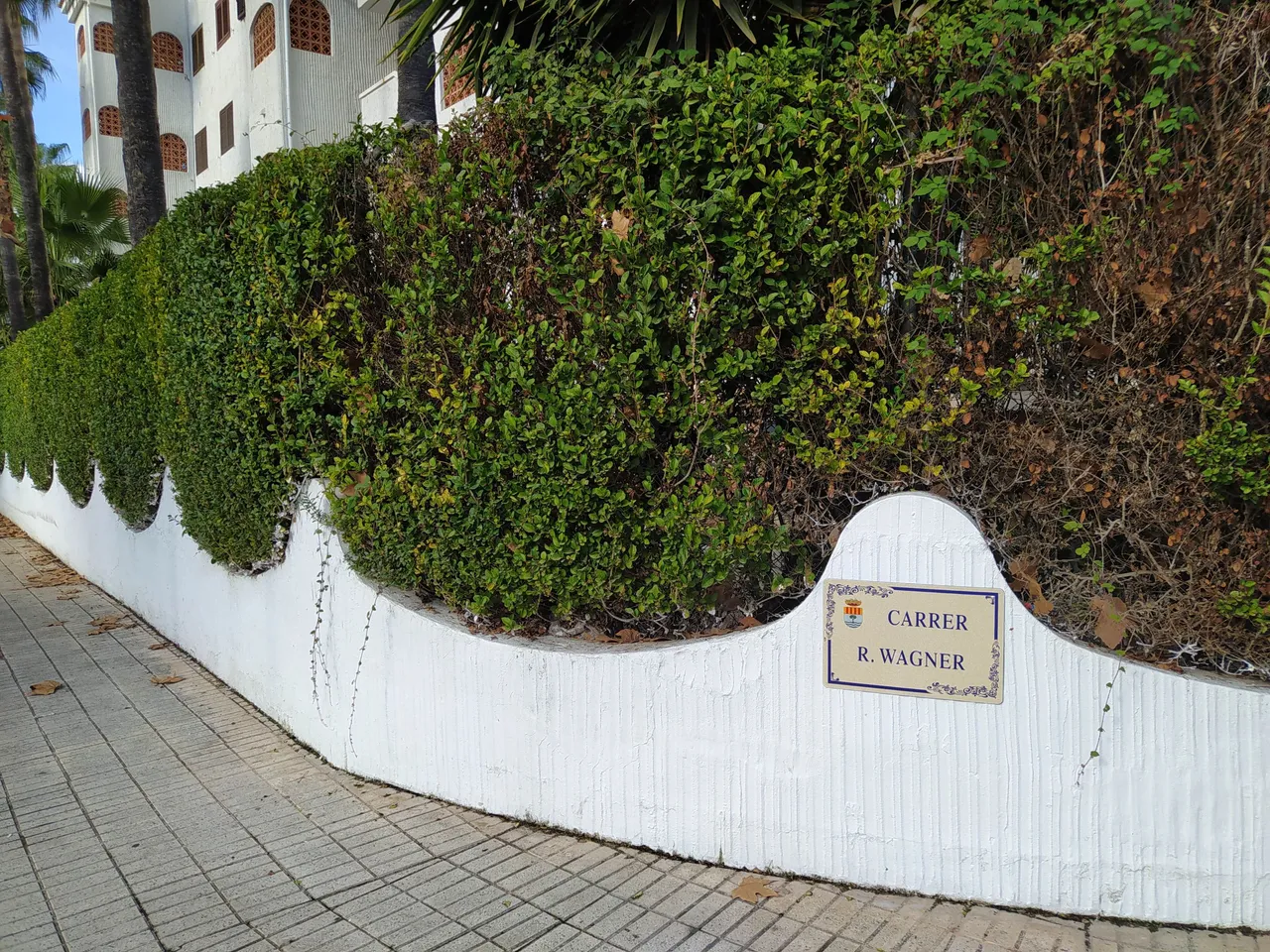
There are more streets, like J.S. Bach and Oscar Esplá (a composer from this area) but I guess we had enough of the visual demonstration of the names. With the music in our minds, we arrive at the end of the boulevard, leaving behind the small cross streets and all the greenery and roundabouts.
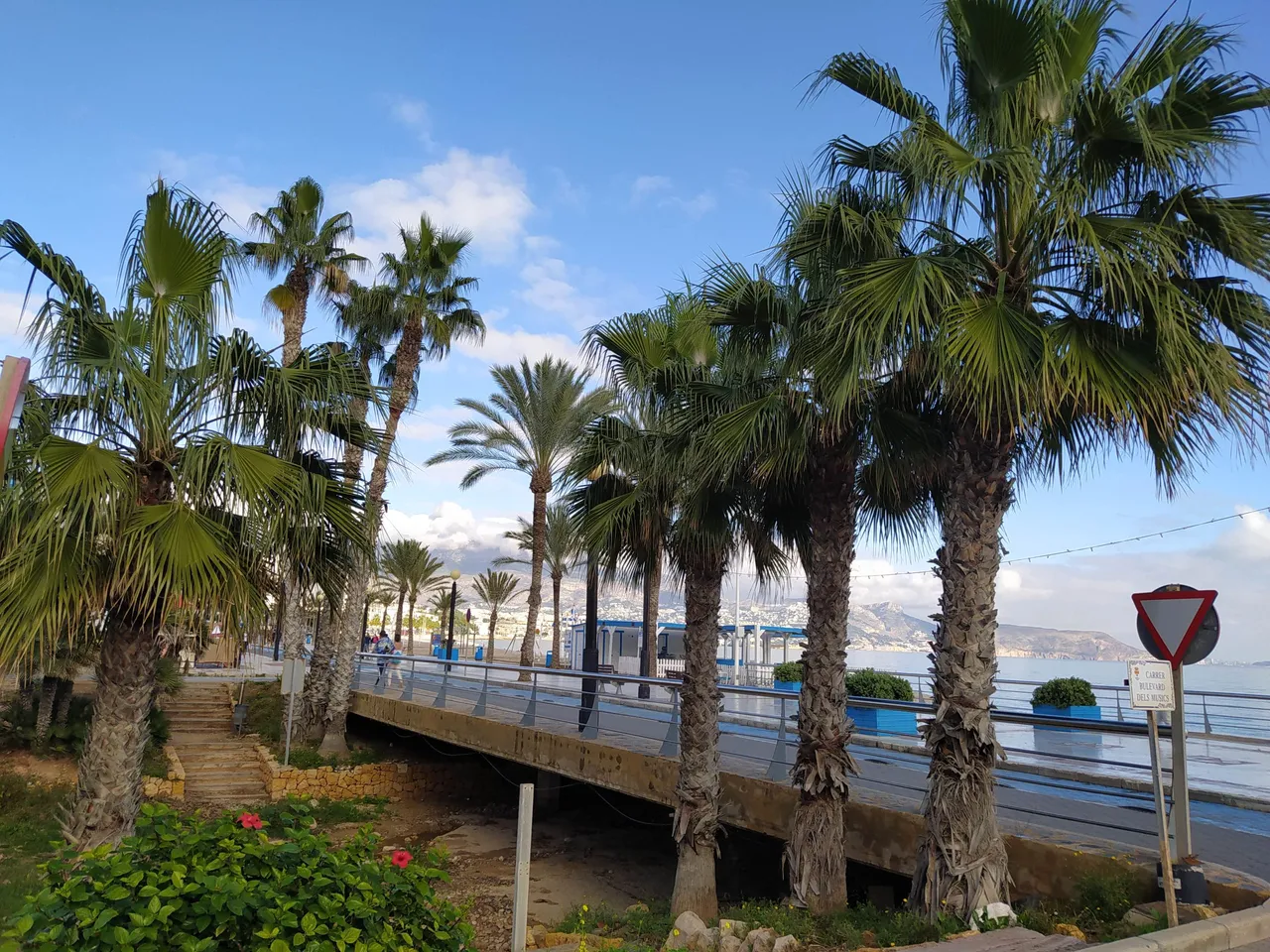
With the last reminder that musicians and composers were the main protagonists of this walk, we cross the last bridge and find ourselves on the promenade.
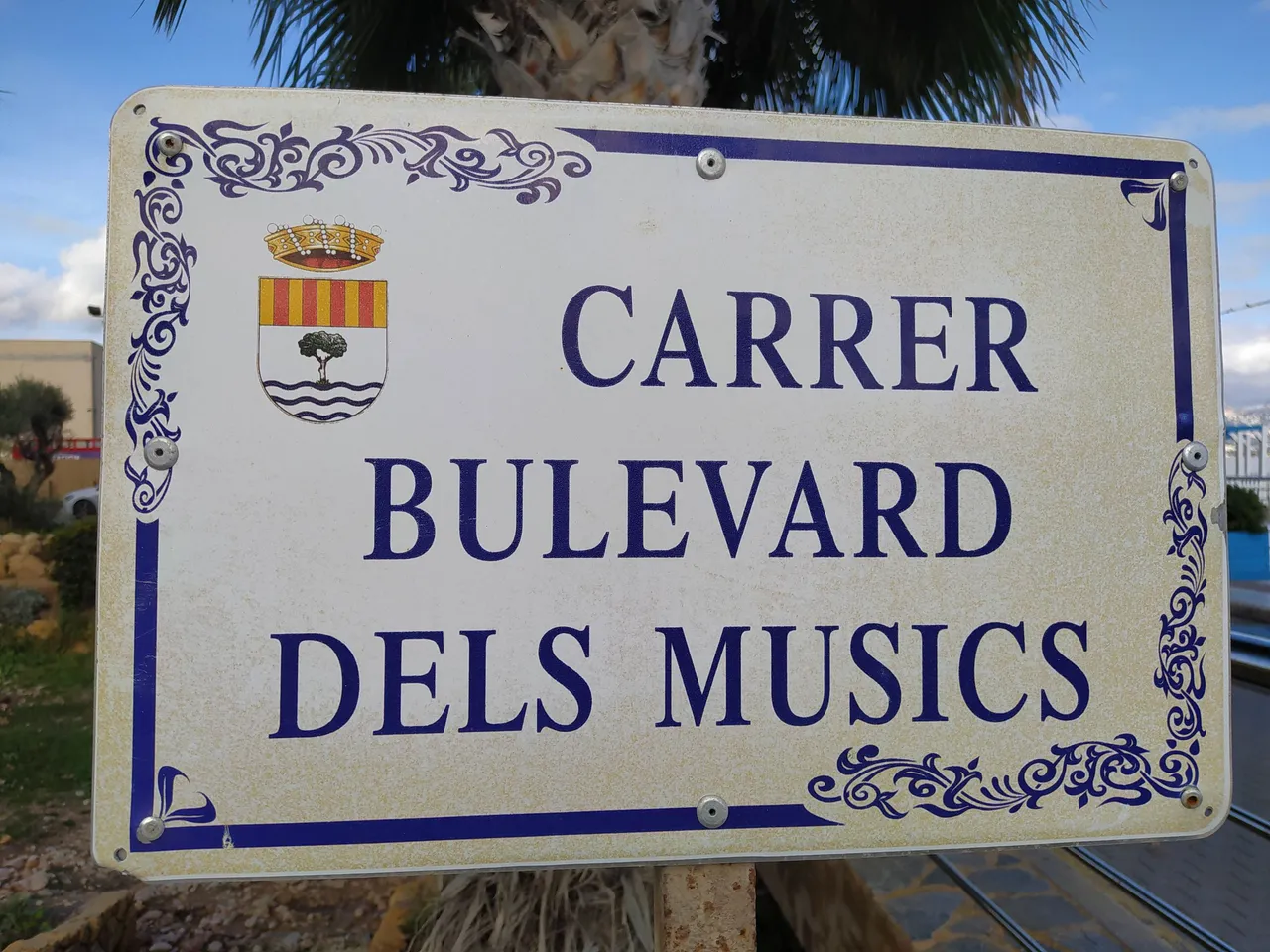
The sea with its blue tones is our last stop, no composers and bridges will come back today to this walk. Anyway, I hope you enjoyed this sunny day in my neighbourhood. I know, it is not a great city like those that I mentioned at the beginning of the post, but my little town also has a bit of charm to bring.
